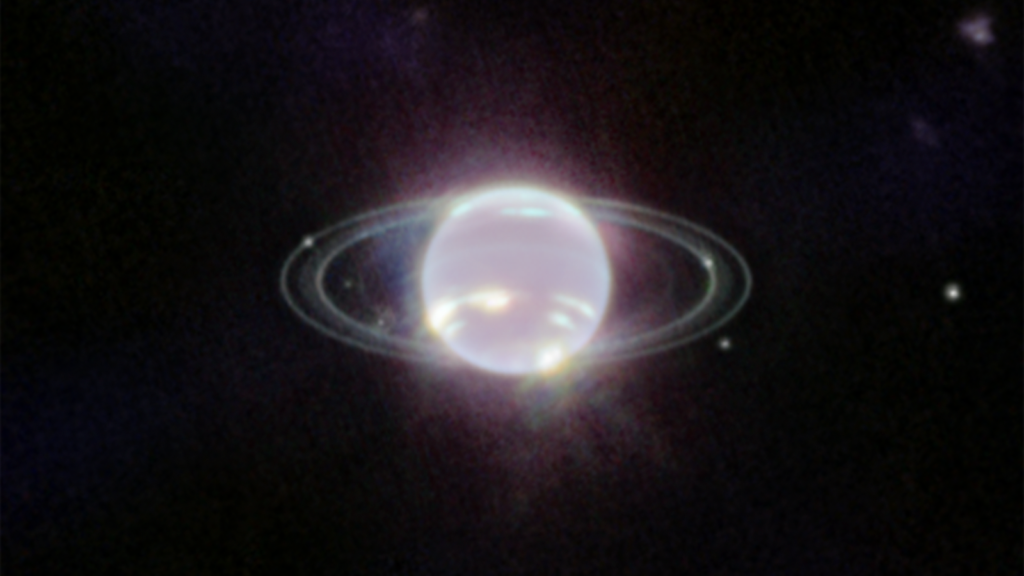James Webb space telescope captures Neptune rings and moons | Science & Tech News

NASA has released brand new images capturing Neptune and its rings, taken by the James Webb space telescope in July.
Neptune is the solar system’s outermost planet which has thin rings with faint dust bands around it.
These have been observed in infrared for the first time, allowing for seven of Neptune’s 14 moons to be captured.
The seven that can be viewed from the newly-released shots include Galatea, Naiad, Thalassa, Despina, Proteus, Larissa, and Triton.
Triton is Neptune’s largest and most unusual moon, which dominates the James Webb portrait of Neptune as a beaming point of light, creating signature diffraction spikes that are seen in many Webb images.
Webb recently showed Jupiter at its clearest in fresh photos publicised last month.
The brand new telescope technology was launched under a year ago in December 2021 and exists with the purpose of peering into the universe.
Experts are hoping to be able to see back to the beginning of time when stars and galaxies first formed.
Credit: NASA, ESA, CSA, STScI
NASA’s Voyager 2 was the first spacecraft to view the icy, blue planet of Neptune in a 1989 flyby, with no other spacecraft having successfully visited the planet.
It has been three decades since astronomers last saw the rings from Neptune in detail, Space Science Institute’s Heidi Hammel said.
Ms Hammel, a planetary astronomer and Neptune system expert working with Webb, said in a Twitter thread: “More than 20 years in the making, and JWST delivered.
“…And that bright blue “star”? That’s no star! That’s Neptune’s fantastic moon Triton! It looks brighter than Neptune because at these near-IR wavelengths, Neptune’s atmospheric methane absorbs sunlight, making the planet darker – this is also why the rings pop out.”
James Webb is now the world’s biggest and most powerful telescope, which can capture as far as one million miles from Earth.
Recent Posts
- Fred Olsen Cruise Lines ship makes Newcastle debut
- Agent Diary: Wildlife experiences are a big draw – be sure to sell only the ethical ones
- Virgin Atlantic plans electric air taxi service for UK
- Algarve ranks as cheapest destination in holiday money barometer
- Why you need to visit the Boyne Valley on your next Ireland trip







Recent Comments